Anniversary Testimonials
Residents, fellows, and program directors share their memories, experiences, and current career positions in honor of PMR/F’s 50th anniversary. Testimonials are organized by fellows’/residents’ class year and directors’ years of service.
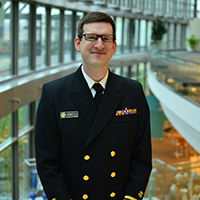
Medical Officer, Epidemiology Competency-based Curriculum Team, Epidemiology Workforce Branch, CDC
2014
CDC’s PMR/F program gave me the skills to learn to be a better public health leader. I was able to look at outbreaks in a new light, with an eye towards how to prevent future outbreaks using policy, communication, and scientific guidance. I worked on preventing outbreaks with contact lenses while in PMR/F which ultimately led to me helping to design CDC’s Health Contact Lens Week program. I also led an Epi-Aid involving a cryptosporidium outbreak associated with a surface-supplied municipal drinking water that led to me updating national boil water advisory communication guidelines.
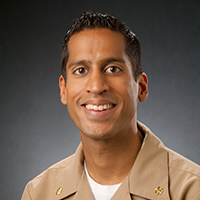
Chief, Epidemiology & Surveillance Branch, Division of Viral Hepatitis, CDC
2014
My participation in the PMR/F program came at an important time in my career. The program allowed me to take the core epidemiology training I had received in EIS and understand how to translate science into policy and practice. I was able to enhance my leadership skills through training in health policy, program evaluation, and financing. In PMR/F I gained a much better appreciation of the socioeconomic and political context behind public health programs. I remember how interesting it was to be going through PMR/F during the implementation of the Affordable Care Act. I would be working on community-level HIV prevention programs in one moment, and then seeing patients in the Ryan White clinic the next. The entire experience helped me understand what it meant to have a preventionist’s approach to clinical care. I also realized the value of experiencing public health at different levels of government. That type of perspective cannot be ‘taught.’ Overall, I’m grateful for my opportunity to be part of PMR/F — I still draw from those experiences in my work today.
CDC Liberia Country Director, CDC
2016
I will be enduringly grateful to Dr. Asim Jani for his innovative and indomitable commitment to sustaining the PMR/F residency during a challenging time in its existence at CDC. Despite the fiscal and administrative obstacles, he not only sustained PMR/F, he also adapted and modernized it such that individuals like myself who came to CDC as clinically-trained providers without board certification, had a viable and credible path towards specialty board certification. His courage and “won’t take no for an answer” commitment is the reason I was able to stay at CDC and become board-certified while still serving as a USPHS officer in an overseas duty location. I will also be enduringly grateful to Ms. Li-lien Yang for her incredible gift of identifying the precise resources that PMR/F trainees, graduates, and leaders need to be successful in their work. I highly value the leadership experts and training platforms that Ms. Yang has referred me to that have been game-changers in how I now lead my country office and how I led my previous branch. PMR/F gave me insight into who I wanted to become as a leader and gave me the skills and training experiences necessary to achieve it.
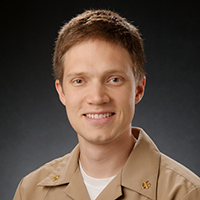
Epidemiology Team Lead, Mycotic Diseases Branch, CDC
2014
I didn’t know what I didn’t know until I entered PMR/F. I thought of leadership as the realm of climbers looking to get ahead and budgets, planning, and strategy as boring stuff to be tolerated. Now I see that public health rises and falls on all those areas, particularly leadership. PMR/F gave the training, structure, and space to build those skills, which have been more valuable to me than I ever expected.
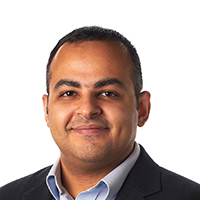
Medical Epidemiologist, Global Immunization Division, CDC
2018
I appreciate my time in the CDC PMR/F as it allowed me to gain unique experiences and skills in leadership and management that I still reflect and draw on until now!

Division of Global Migration and Quarantine, CDC
2015
PMR/F was two years of running around taking the handles off of pumps while Li-lien and Asim watched like proud parents. I would do it again in a heartbeat.
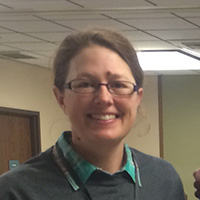
Public Health Veterinarian/Local and Tribal Support Coordinator, State of Montana
2014
I loved working with the other four PMR/F colleagues. We had so much fun learning and pushing each other to expand our thought processes during our time in Atlanta for the orientation. The summer courses were wonderful and complimented what was learned in the EIS Program. The tools we learned during the summer course, set us up to excel in our positions.
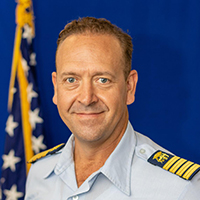
Undersea Medical Officer of the US Coast Guard, District 14 Flight Surgeon, and Senior Medical Executive for Hawai’i and the Pacific
2013-2015
PMR/F – specifically CDC’s – is a responsive program leveraging opportunities to provide exposure at all levels. For example, the Ebola response: initiating and conducting contact tracing at a country level (international impact); my clinical time/rotations performed in Liberia (1:1 patient care in an Ebola treatment unit); coming back and assisting New Orleans / Louisiana preparations (city and state level impact).

Assistant Professor, Department of Population Health & Pathobiology, North Carolina State University
2016
During PMR/F, I had the unique opportunity to work across local (Durham County Department of Public Health), state (North Carolina Division of Public Health) and federal (CDC) levels on a prominent public health initiative in North Carolina. I conducted hepatitis C testing and linkage to care among people who are at increased risk for hepatitis C, including people who inject drugs. My mentors—leaders in their fields—supported me to acquire new skills in public health program development, implementation, and evaluation. Through PMR/F, I gained new perspectives on the bridges between health care and public health systems and the impact of policy on critical public health challenges.

Chief Public Health Veterinarian, Deputy Assistant Administrator, Office of Public Health Science, USDA Food Safety and Inspection Service
2011
PMR/F exposed me to the inner workings of the Maryland State Health Department. I valued being able to work with the State Public Health Veterinarian on the wide variety of issues that crossed her desk every day. Not only did PMR/F help me learn a tremendous amount about administering public health programs, but I was able to literally get my hands dirty out in the field, interacting with the people our interventions were intended to help. My experiences in PMR/F were among the most gratifying experiences in my career.

Lead, Data Standardization and Assistance Team, CDC
2013
Participating in the PMR/F program rounded out my public health training post-EIS. As I was finishing up EIS I was left with always asking, now what? How is the data I analyzed used to inform public health action and how can I use public health data to inform policies and programs? PMR/F answered those questions with the added benefit of working at a jurisdiction, versus CDC which to this day enables me to have a holistic lens of the drivers and use cases impacting local, state, and federal public health. Finally, I learned more about myself and had access to leadership trainings. The ‘soft skills’ I acquired as a result I still use today and have helped me shape my career path.
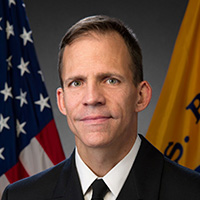
Chief, Workforce and Institute Development Branch, Division of Global Health Protection, Center for Global Health, CDC
2005
The PMR/F program was the perfect complement to EIS. It was a privilege to have time dedicated to developing competencies in program evaluation, leadership, and program management. I only wish I had greater appreciation at the time for how vitally important those skills would be in my career at CDC.

Medical Director, Occupational Health, Chief Well-Being Officer Designee, VA Boston Site Director: HSPH Occupational and Environmental Medicine Residency
2008
Learning key leadership skills alongside the Emory Preventive Medicine class will always be an experience that I always return to, no matter the current events or setting. Not only did the leadership training we received help me navigate my future career at my current healthcare organization, but the friendships and closer connections developed during that year have sustained my growth over the years as I reunite with my colleagues from PMR/F and Emory often at the American College of Preventive Medicine meetings – thank you ACPM Austin, TX 2008 for setting that stage! When I think about PMR/F, my one takeaway is that while I will always treasure my EIS experience for the epidemiology and outbreak investigation knowledge, it is the leadership skills and evaluation tools that I learned during PMR/F that I use every single day of my current position and have formed my career trajectory for which I am forever grateful.
COVID 19 Mitigation and Prevention, Alameda County Public Health Department
2001
I have great memories working with Dr. Paul Wiesner at Dekalb County Board of Health, as well as the training with Jim Lando and team.
I loved the visit to Washington, D.C. to learn about public health policies and budgets, and our fun PMR/F reunions and get togethers. The training did really help me to understand the scope of public health policies and roles.
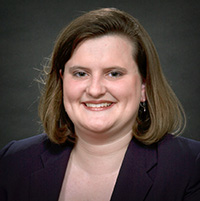
Associate Director for Emergency Management, National Center for Environmental Health (NCEH) and the Agency for Toxic Substances and Disease Registry, CDC
2005
During PMR/F I made lifelong friendships with my fellow EIS Classmates that continued into PMR/F including Priti Patel, Martha Iwamoto, and Myrna Charles. We have had reunions more or less yearly since and encourage each other both personally and professionally. We call ourselves the PMR/F All-Stars!

Corporate Healthcare Epidemiologist, AdventHealth
2004
One of the great lessons of the COVID pandemic is that no matter how robust or intact the science is, the end result depends upon how well the communication & policies are implemented into practice. The PMR/F program taught me the skills to help lead my organization during this crisis by shifting the focus from presenting the science during EIS into implementing it into policies that benefit the public. That single year influenced and transformed my approach to public health in the healthcare setting, and for that I am forever grateful.

Medical Director, Division of Disease Control and Health Protection, FL Department of Health
PMR/F Director: 2011 — 2015
2006
It is with great respect and gratitude to those CDC PMR/F leaders who preceded me that I offer these brief comments. I also owe a great deal to my prior mentors and colleagues, for having started my CDC career with EIS (2003 – 2005) followed by PMR/F training (2005 – 2006), both of which provided me competencies that I use every single day.
During my time as Director of PMR/F from 2011-to 2015, I think we were truly able to make good on Abraham Lincoln’s quote (shared often with many learners and colleagues), “The best way to predict your future is to create it.” I’ll always cherish the time I spent trying to facilitate positive change in the PMR/F programs, through a particularly challenging period, when our sails truly needed to catch the winds of imagination and innovation. That five-year period of service happened to immediately follow the passage of the Patient Protection and Affordable Care Act (2010), the key legislation that welcomed in a new era, one focused on public health and health care collaboration, population health, health equity, Public Health 3.0, and social medicine. It was also a time when people seriously explored shifting the traditional disease management and prevention paradigm to a more salutogenic one, where health promotion and protection would have even greater significance. Examples of the creative energy released in the PMR/F programs during those years included: the development of the Health Systems Integration Fellowship, the creation of the extant Population Health Training-In-Place Program model, and the CDC Preventive Medicine Grand Rounds. We were also overjoyed to see curricular/programmatic enhancements like the introduction of debate pedagogy to teach health policy; co-leading training with public health informatics around systems thinking; incorporating ACGME milestones into the evaluation process; collaborative development with ACPM and HRSA for Integrative Medicine curricular competencies in Preventive Medicine education nation-wide; and admitting stellar EIS-trained nursing health professionals along with gifted non-EIS candidates into the PMR/F training programs.
Most of all, it was such a privilege to serve with incredible members of the PMR/F team – especially Li-Lien Yang, and the myriad of wonderful learners whose professionalism and impactful projects enriched me, the PMR/F programs, and the preventionist community writ large. And thanks to my successor, Tony Neri, MD MPH, the current PMR/F Director – such a strong and effective colleague whose vision and leadership has continued to evolve the PMR/F programs in so many wonderful ways!

Field Medical Director, Vaccines Pfizer
2003
Completing the PMR/F through the CDC paved the way for my career in population health. The program, including completion of my MPH, complimented my clinical and EIS experiences, and has allowed me to make a difference in the health of the communities that I’ve served.
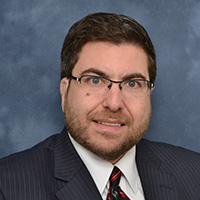
Branch Chief, Surveillance, Epidemiology, and Outbreak Investigations Branch, Division of Tuberculosis Elimination, CDC
2009
I believe that CDC PMR/F gave me the skills to excel as a leader at a large public health agency. I moved into a leadership position at CDC just a few years after completing the PMR/F, and my career has been full-speed ahead ever since. When asked what prepared me to succeed as a public health leader, one of the things I always point to is my training in the PMR/F.

DGHP Country Program Director, DR Congo
2008
PMR/F was a tremendous opportunity to expand and develop my skills beyond epidemiology into areas such public program management and evaluation, leading a public health project and government policy making.

Associate Director for Science, Division of Global Health Protection, CDC
2001
As part of CDC’s PMR/F, I attended Johns Hopkins University (JHU) for an MPH during 2000-2001. I enjoyed the time in Baltimore and getting a broader vision of what types of opportunities and needs exist within public health for those with Preventive Medicine training. Part of that occurred as we were invited to engage with the JHU PMR/F program where we made some interesting new colleagues, some of whom later came to CDC to do EIS. Another highlight was the week we spent in Washington, D.C. getting some firsthand experience with how our political system makes health policy. Some of the valuable experiences and training I received included a better understanding of how organizations work most effectively, policy-making, monitoring and evaluation, and management and leadership.
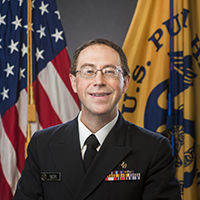
Health Scientist (Detail), Data Modernization Initiative Implementation Unit, CDC
PMR/F Director: 2015 – Current
2009
While my entryway into CDC was through EIS, it is the skills I developed in PMR/F that I continue to use every day to manage and lead programs. The unique combination of mostly hands-on experiences with leaders from intentionally different agencies (federal vs. state/local) along with focused didactics is what makes PMR/F an effective training program and leader in the field.
Having been both a trainee and the Director I now have a much better appreciation for the work that goes into providing a high-quality curriculum and learning environment. One of the best attributes of CDC is the ability to have positions that leverage people’s passion on those topics. The PMR/F is, in all shapes and forms, better by having Li-lien Yang and other staff there who truly care about providing great learning experiences.

Deputy Director for Non-Infectious Diseases, CDC
2009
The CDC PMR/F provided me the opportunity to develop foundational and pivotal skills leading teams and managing key activities to begin to understand the breadth and reach of public health in communities. The program leaders’ expectations for us to accept and meet challenges were complemented by caring advice and support. Our ability to meet with public health experts to hear and be inspired by their professional journeys was invaluable. What I gained from PMR/F set me on a 10-year course to work in nearly every aspect of local and state public health, form meaningful and lasting relationships with colleagues and community members, and feel deeply enriched and fulfilled by the experiences. I can’t express how grateful and proud I am for being a part of CDC’s PMR/F program, and that it continues to inspire me personally and professionally.

Director, Office of Research, Center for Veterinary Medicine, Food and Drug Administration Office of Research, FDA
2003
The thing that I really enjoyed about PMR/F was the opportunity to learn how to build an organization from a Harvard MBA who also understood public health programs. Twenty years later, I understand just how unusual people are who have expertise in both, and I am still using that training to build and lead organizations.
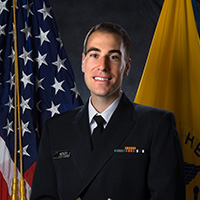
Regional Representative, ATSDR Region 10
2008
One of the most valuable components of the PMR/F training for me was the Washington, D.C. experience. We met with then-Representative Tom Price, who took the time to provide us his perspective as a physician in Congress. We were able to meet with staff from CDC-Washington to talk about their role promoting public health. We also got a chance to visit our representative’s office and pick up a ticket to visit the House floor. I have frequently used the insights gained from the Washington, D.C. experience to help me better promote public health and interface with partners and policy staff.

Team Lead, Field Epidemiology Training Program, Division of Global Health Protection, Center for Global Health, CDC
2007
The CDC PMR/F training allowed me to build out my public health leadership and management foundation and enabled me to be qualify for the American Board of Preventive Medicine Board certification exam for General Preventive Medicine And Public Health. The practicum year in the East Metro multi-county health department was incredible in reminding and exposing me to the variety of issues that come to the public health department. Dr. Hofer was an exemplary mentor, allowing me to lead as many projects as I could effectively manage and letting me walk in his shoes of the health director in the necessary strategic thinking and decision-making processes in successfully running the department.
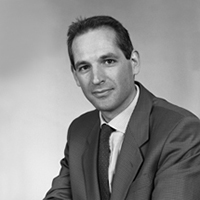
Professor of Pediatrics, University of Utah
1996
Some of the best memories were from the trip to DC with the class and faculty. The staff arranged meetings with a number of legislators, and the experience was, to say the least, interesting—even those supporting CDC had very strong opinions about what CDC should NOT be doing (e.g., public health assessment of gun violence). It was a worthwhile insight on how political views provide a particular lens on public health activities and priorities.
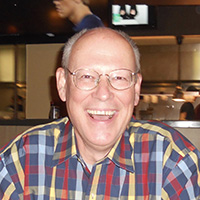
Program Director, Epidemic Intelligence Service, CDC 1998-2013 (Retired)
1993
EIS officers have the luxury of exposure to the best field epidemiology training in the world. The “price” for this training is a lot less emphasis on the non-scientific roles of a public health practitioner (management, leadership, operations, and program development). I joined the PMR/F program because it looked like a good opportunity for a field EIS officer (CT) to transition to a position in Atlanta for the third year of the PMR/F. What I didn’t recognize at the time was the added value of the additional PMR/F training in becoming a good public health practitioner, not just a good epidemiologist.
My PMR/F assignment was with the “International Branch” of the Division of Field Epidemiology in the Epidemiology Program Office (a group that has long since been reorganized into a different part of CDC). As a PMR/F resident I learned the nuts and bolts of helping other countries around the world establish and grow EIS-like programs. These programs eventually became tThe Field Epidemiology Training Programs that form the background foundations of the international Training Programs in Epidemiology and Public Health Interventions Network.
My PMR/F experience provided me with multiple opportunities to work on the program development of new programs and to support existing programs. I also had multiple opportunities to develop training materials for different audiences and to conduct Epi training around the world. I stayed on with the branch after my PMR/F and the skills developed during that experience led me to be selected 5 years later as the Director of the EIS program—the BEST job at CDC.

Director, National Center for HIV, Viral Hepatitis, STD, and TB Prevention, CDC
Former USPHS Rear Admiral
1999
Participating in the preventive medicine residency was challenging, interesting, and useful. I learned several lessons from my time in PMR/F. First, we are fortunate that in public health, we can make work a vocation. For example, for my master’s thesis, I studied human Salmonella infections acquired from pet reptiles and amphibians. Surprising to many, it was the leading cause of salmonellosis among persons under 21 years of age. I spent weeks travelling between pet stores swabbing the cloacae of reptiles to analyze their stool. We established that essentially all reptiles carry Salmonella. I will also never look at a python or iguana the same way—and, trust me, they don’t look at me the same way either. I talked about frogs and snakes for hours, making me a relatively unpleasant dinner guest, but I loved working on an underappreciated preventable cause of disease—even if it required ruthlessly recommending that baby turtles not be sold. My work became important to me because I thought doing it well could make a difference in people’s lives. I learned to check with myself every month or so to see if my work makes and continues to make me feel the same way. If it doesn’t for a relatively long period, then I change what I am focusing on. Also, don’t give up easily in search of the truth. While stationed at the California Department of Public Health a dedicated EIS Officer, Udo Buccholz, and I found ourselves investigating an outbreak of gastrointestinal disease among patrons at a Thai restaurant. After extensive interviews, questionnaires, and customer tracking through credit card receipts we were left with a confusing litany of potentially implicated ingredients, and signs and symptoms that led to few pathogenic organisms. We pestered patrons and food preparers, perused Thai cookbooks, and worked closely with the County laboratory who was testing samples. Finally, after weeks of investigation, the laboratory found misshapen crystals mixed with the salt taken from the storeroom and stovetop—these crystals were put in a gas chromatograph and were revealed to be methomyl, a controlled-use organophosphate insecticide. We also found a dose response relationship between consumption of greater amounts of salt in dishes and probability of illness. And, through pesticide use registers, we were able to traceback to possible culprits. I now am just a little bit wary every time I eat Pad Thai.

Director, Division of Parasitic Diseases and Malaria, CDC
1996
I had a fantastic experience with the Puerto Rico Dept of Health and CDC’s Dengue Branch with stellar supervisor Dr. Jose Rigau.

Senior Advisor for Science, Program Implementation Branch, CDC
PMR/F Director: 2002 – 2011
1997
Following the valuable and memorable CDC PMR/F year I spent at DeKalb County Board of Health, I was happy to support the program and other residents and fellows. I assumed a CDC staff position after graduation but also served as a PMR/F Assistant Director before becoming Director in 2002. During my tenure I welcomed the opportunity to work with and learn from my predecessors, Drs. Art Liang and Jim Lando, the many advisory and graduate medical education committee members internal and external to CDC, supervisors, faculty, staff in the PMR/F and other training programs, and the residents and fellows.
I recall many successes despite the inevitable challenges. We completed a program evaluation and used the results to guide program improvement. This included expanding the program’s competency-based curriculum and integrating MPH studies and direct patient care experiences into a 2-year residency to meet changing national residency requirements. The quality of the program, evidenced through documentation, faculty and trainee attestation, and site visitor reports, led to PMR/F being fully accredited twice, each time for the maximum 5-year cycle.
I learned a lot and grew personally and professionally as PMR/F Director. It was a privilege to develop expertise in graduate medical education, and the specialty of preventive medicine which has a breath of practice beyond CDC’s model. I will forever be thankful for the encouragement of Dr. Liang and the support of my supervisor, Dr. Denise Koo, to apply for membership on the Preventive Medicine Residency Review Committee of the Accreditation Council for Graduate Medical Education. During my six years of service, I added a public health perspective as the committee set residency standards to enhance the education and quality of future public health and general preventive, aerospace, and occupational medicine physicians. I also worked with great committee members from institutions across the U.S.
Lastly, I will also remember my years as PMR/F Director as a time when I was honored to have met many nice, smart, hard-working people and been a part of shaping the professional development of the many fellows and residents I supervised. I am always happy to hear from them or read about what they are doing, and it is extra special to be able to say they have done well.
Senior Advisor, WHO Deputy Director General
1998
Being a PMR/F in the county where we used to live, work, and play has been particularly inspiring. All public health is local they say, the residency gave me an incredible view on issues faced by DeKalb County, GA population. On top of those 12 months was a mentor who accompanied my career until his passing in 2019, Dr. Paul J Wiesner. Although I continued on to global affairs, it seems clear that I would never have paid the same attention to subsidiarity without having benefitted from this wonderful experience.
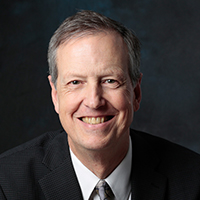
Professor, Department of Health Systems and Population Health School of Public Health, University of Washington
1984
The PMR/F program gave me much more of a systems perspective on public heath than I had had previously. I have since spent my career leading and managing public health programs, research, and teaching at the International Center for Diarrheal Disease Research, Bangladesh; the U.S. Agency for International Development and its HIV/AIDS prevention programs; CDC’s National Center for Chronic Disease Prevention and Health Promotion, Director’s Office, and the Epidemiology Program Office; CDC’s Prevention Research Centers program; and the University of Washington. The program gave me that push toward leadership and management.

Professor-in-Residence, Departments of Epidemiology and Community Health Sciences, UCLA Fielding School of Public Health
1984
I started out my PMR/F program during my second year of the EIS in CDC’s Center for Prevention Services, Division of Immunization, in Atlanta, where my responsibilities and duties included maintaining and improving surveillance systems for vaccine preventable diseases (with emphasis on poliomyelitis, diphtheria, tetanus and pertussis), outbreak investigations, and special assignments such as a five-week assignment for USAID as diphtheria consultant to the Ministry of Health of the Government of Indonesia in 1983.
This opportunity arose due to an Epi-Aid for a Diphtheria outbreak in the Yemen Arab Republic for 6 weeks which then made me a CDC “diphtheria expert” having seen more cases than most other CDC physicians in the US. The last 6 months of my PMR were completed on assignment as the Medical Officer for the Expanded Programme on Immunization (EPI), South-East Asia Regional Office, of the World Health Organization (WHO) stationed in New Delhi, India.
The PMR/F training launched a career in international health with such diverse assignments as serving as the WHO Representative to India and the Chairperson of the United Nations Theme Group on HIV/AIDS for the Joint UN Program on AIDS in India, WHO Representative to Indonesia, Director of the WHO Expanded Programme on Immunization, Geneva, Switzerland, Public Health Advisor for the United States Agency for International Development in Washington, D.C., and Regional Advisor for the Expanded Programme on Immunization, WHO South-East Asia Regional Office in New Delhi, India. Subsequently, upon return to the US, I served as the Director of Communicable Disease Control and Prevention for the Los Angeles County Department of Public Health where I was able to supervise and work with California Department of Public Health.
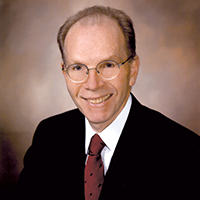
CDC Director: 1998-2002
PMR/F Director: 1984-1988
From 1979 to 1984, I served as the Assistant or Deputy Director of CDC’s Preventive Medicine Residency program under Director Donald Hopkins, before the program added a Fellowship option. From 1984 to 1988 I served as Director of the Preventive Medicine Residency.
During this period, we had several continuous operating principles, precepts, and goals.
- The training field experiences of the EIS 2 years are conservatively equivalent to a year of PMR/F and requirements for the PMR/F were performed in addition to EIS assignments, e.g. spend a significant amount of time working in state and/or local health departments and if possible have a supervised global public health experience.
- Didactic sessions were focused on important public health topics that were not part of the standard EIS experience – e.g. quality measurement, evaluation science, decision science, medical decision making, modelling/forecasting, Non-Communicable Disease epidemiology, communicating public health risks, health care delivery, health economics, etc.
- Visiting faculty included – Harvey Fineberg, Barbara McNeil, Don Berwick, David Eddy, and Milton Weinstein.
During my years directing the program, PMR/F was well received by CDC staff, and was consistently the largest US PM residency and the residency with the highest average Preventive Medicine Board scores.

Special Advisor on Food Industry Relations, Office of Strategic Communication, Policy, & Partnerships, Division of Foodborne, Waterborne, and Environmental Diseases
1982
From 1988 to 1993, I served as an official Assistant Director for CDC’s Preventive Medicine Residency program under Dr. Jeff Koplan and Dr. Alice Ring. From 1993 to 1998 I served as Director.
The 1988 Institute of Medicine report The Future of Public Health said, “Today the need for leaders is too great to leave their emergence to chance.” Fortunately, today, CDC has a Leadership Development initiative underway. I would like to think the PMR/F was ahead of its time. During this period, we continued the earlier professional development goals, requiring at least a year each of health department as well as headquarters experience for each resident. Workshops and didactic sessions were focused on important public health topics that supplemented the standard Epidemic Intelligence Service (EIS) experience such as leadership and management, organizational structure, priority setting and program planning, grant writing, decision analysis, the Federal budget and legislative processes, and public health ethics. Visiting faculty included David Sencer, Bill Foege, Mark Messonnier, Martin Meltzer, and Fitzhugh Mullan.
PMR/F has played an outsized role in the world of professional development and training inside and outside CDC. For many years, the CDC PMR/F was the largest residency in the country with about 16-30 MD & DVM residents/fellows engaged over 2 years overlapping with the 2nd year of EIS.
Professor and Division Head, Epidemiology, SPH, UC Berkeley
1982
The PMR/F year at CDC was instrumental in helping shape my career. It allowed me to work for an additional year in Atlanta at CDC and then move into a staff position, which solidified my love of epidemiology and was instrumental in shaping my subsequent career.

Professor Emeritus and Preventive Medicine Residency Program Director, University of Wisconsin-Madison
1985
The CDC Preventive Medicine Residency/Fellowship (PMR/F) was a critical steppingstone in my career. Like many preventive medicine physicians, I only completed one year of clinical training after medical school and had intended to work internationally with just that training. But that plan was put on hold, on the advice of a medical school mentor at the University of Wisconsin, who advised me to first seek training in epidemiology, before going abroad. I was lucky to be accepted into the EIS program and was assigned to the State of Michigan.
Like a kid in a candy shop, I realized that I had found my calling. But the time went quickly, and after only a year I was facing the same question – “what next?” On the advice a CDC mentor, Jim Marks, I applied to and was accepted into the Preventive Medicine Residency program, assigned to the Division of Nutrition in Atlanta. More candy! During my residency program, I was accepted into CDC’s career development program and completed my MPH at the University of Minnesota the following year.
With this training, I passed the boards in Public Health and General Preventive Medicine and returned to the Division of Nutrition to complete the 2-year “payback” part of the program. I had intended to spend my career with the CDC in Atlanta (owned a house, had our 3rd child there), but was recruited back to practice preventive medicine in my hometown of Madison. I spent 9 years at the state health department, and 25 years at the university, where I started our own preventive medicine residency program, that I currently direct. I truly believe that none of this would have been possible if not for the CDC PMR/F program, connecting the dots from EIS to a career in preventive medicine.

PMR/F Director: 1988-1993
I consider my tenure as PMR/F director to be one of the most rewarding experience of my career. It was inspiring to work with such bright young heath professionals with the potential to become the next generation of public health leaders. It always made me proud and happy to see so many of them assume leadership positions and to excel.
With the invaluable assistance of dedicated PMR Assistant Directors we were able to expand and enhance the program in many ways. A few of the highlights of those years (1988-1993) include:
Establishment of a fully functioning Preventive Medicine Residency Advisory Committee (RAC), compliant with requirements of the Accreditation Council for Graduate Medical Education Residency Review Committee, to guide program policy and make substantive recommendations concerning the appropriateness and quality of the training. In addition to representatives of CDC CIOs, the RAC was significantly expanded to include The Agency for Toxic Substances and Disease Registry representatives of State and local health departments, Morehouse School of Medicine, Emory University School of Public Health, and first- and second-year residents. In 1989 the program, with the assistance of the RAC, undertook an extensive re-examination of the CDC PMR, leading to many positive changes.
With additional funding from the Health Resources and Services Administration, CDC contracted with the Battelle Research Institute to conduct a national survey of PMR/F graduates for the previous ten-year period. Completed in 1991, the survey results provided valuable data and recommendations for all US Preventive Medicine programs to guide training program design and policy. Major findings of the study pertinent to the CDC PMR/F led to changes that enhanced the depth and quality of training. Of particular note were the significant contributions CDC graduates were making to national health objectives and the high rate of graduates remaining in public health practice and heavily involved in leadership positions.
Based on findings from the Battelle survey, changes were made in the program to better prepare residents for leadership positions and to meet the requirements for board certification. These changes included expanding the didactic and practice experiences in public health administration, management, development of leadership skills, policy development, prevention effectiveness, and translating science into community practice. The program also increased opportunities for experience in occupational health and non-communicable diseases, and developed a database to track CDC graduates’ careers, board certification, academic training, and relate careers to training experiences.
Community based local health department assignments were approved for training in addition to State health department positions and residents were required to spend one year in a State or local health department and one year in a headquarters position during the combined EIS and PMR/F experience.
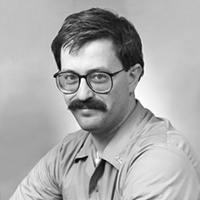
Director, Division of Foodborne, Waterborne, and Environmental Diseases, CDC
1985
The PMR/F residency year gave me the opportunity to work for part of that year in the Georgia State Health Department with a great team, on an array of issues that I had no previous experience in, like drownings in Lake Lanier, and an outbreak in an elementary school. They taught me a lot, and the experience meant I could see things from the State perspective. It was a great program then and continues to be now. Happy anniversary, PMR/F!
Retired after a 36+ year career at CDC and National Institute of Health
1976
There was an immense benefit to me of the PMR/F and, thereby, to public health. The PMR/F program was a special program combining clinical and population epidemiology, immunology (especially cellular, a new field in those days), immunogenetics of susceptibility/resistance to disease. Such a project had never been a part of CDC’s resources prior to that.
As my PMR/F program ended, I left for a fully approved study of endemic diseases among minimally contacted Amazonian AmerIndian tribes of the upper Amazon. Those disease (e.g., Leprosy) studies included field collection and processing of lymphocyte/monocytes for the first time by any CDC epidemiologist. The specimens—transported on dry ice and liquid nitrogen—were flown in from Bogota Columbia for the processing aboard a research ship, then brought back to CDC and transported with me to Oxford, UK. For 18 months I used world class antisera to identify the human leukocyte antigens of these patients and family members of the tribe afflicted.
I brought to CDC from Oxford the techniques for such epidemiology-cellular laboratory studies (immunogenetics) and was gearing up when vaccine immunogenicity studies were added to my duties and then along came AIDS and my CDC lab pivoted to cellular immunity of AIDS.

Adjunct Professor of Public Health, Tufts University School of Medicine
1976
The PMR/F residency supported me in serving as Acting Director of the Division of Personal Health Services and as Acting State Epidemiologist in the Minnesota Department of Health. I remember the monthly seminars in Atlanta with outstanding speakers and illuminating discussions. The residency also provided me with essential knowledge as well as communication and leadership skills that have served me well throughout my career.

Professor of Epidemiology, UTHealth Houston School of Public Health Brownsville Campus, Adjunct Professor of Medicine, McGovern School of Medicine
1976
I had the pleasure of being one of the early residents in the PMR/F program. That opportunity was, in essence, an extension of my EIS and allowed me to conduct several more investigations (15 in all) during my years. It also prepared me for my next assignment which was to establish a research program in Sierra Leone on Lassa Fever, a lasting and life-changing part of my professional experience. During my time as a PMR/F resident I had the opportunity to also oversee a laboratory (CDC’s Bacterial Special Pathogens Branch Laboratory) that helped me establish a laboratory in remote part of Sierra Leone. I had the pleasure of hosting the annual EIS picnic at my home in Decatur, GA during my time as an EIS and PMR/F fellow and that was always a fun time to get together with faculty and new EIS recruits.

Senior Advisor to the Director, National Institute of Allergy & Infectious Diseases, National Institutes of Health
1979
I have many wonderful memories, and especially of the CDC leadership who were all intimately involved in teaching us. Don Hopkins, then the CDC Deputy Director (now working for the Carter Center and living in Chicago), was always wonderful and took endless time with us, including one-on-ones. The same was true of H. Bruce Dull, a top CDC Assistant Director, as I recall, who took time with all of us despite some serious health problems. Bruce died in 2010. I can’t remember whether Don or Bruce ran the PMR/F, but they were both very involved and committed. They made it a special experience. Bill Watson, who was CDC Director for Operations, and who died in 2013, taught us about public health management, as did the then-Director Bill Foege. I remember one session with Bill in which he was describing for us how federal agencies like CDC were alike, and different from, private businesses. I particularly remember him saying that if government agencies had to compete with private business to do what they do, “they’d go out of business in less than a day.” His point was that in the government we don’t have the ability to improve by innovating and streamlining management. We liked his candor and sly humor.

President Emeritus, The Task Force for Global Health; Assistant Surgeon General (Retired)
Founding Director, National Center for Injury Prevention and Control (Retired)
1976
I participated in the earliest days of the PMR/F program, in the class of 1975-76, and I was extraordinarily fortunate to meet the man who would later become my boss, my mentor, and beloved friend. He was the director of the PMR/F program at that time, having recently returned from India where he helped implement the strategy that would quickly lead to the eradication of smallpox from India and, in short order, from the rest of the world. That man was Bill Foege.
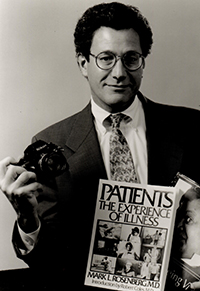
Philip Roth wrote that a mentor can help you become “a bold, honorable and effective man” and can help us deal with “our massive imperfections of intelligence, emotion, foresight and judgment.” A mentor, he continued, can be very important to “an adult’s education: in loss, grief, and, that inescapable component of living, betrayal.” For this I will be ever grateful to the PMR/F program.
It also gave me a good idea of how to be a good mentor and made me want to be a good mentor to others, one way of becoming a better ancestor. I continue to benefit from the PMR/F program every single day. An educational program can’t get much better than that. My deepest thanks to all the whole team that over the years has made the PMR/F a truly priceless experience.